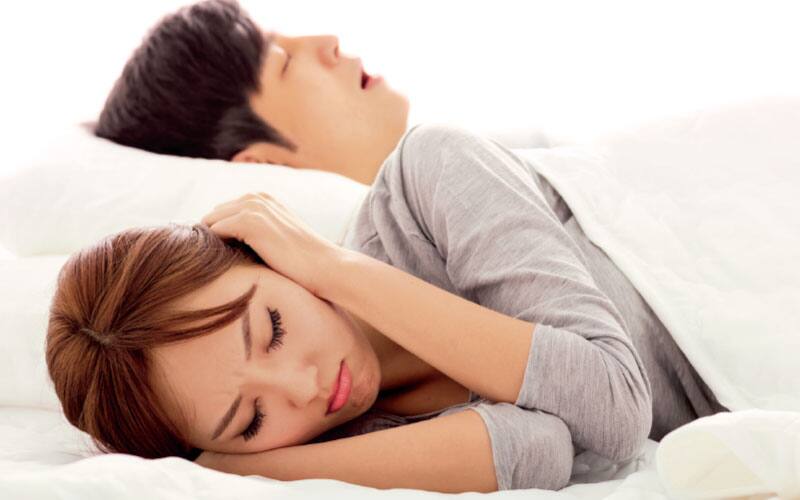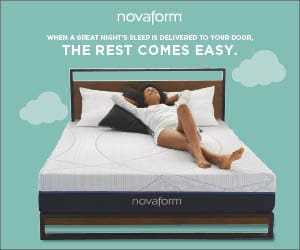
Snooze alarm
More than just a noisy nighttime annoyance, sleep apnea can cause a variety of serious health issues
Snoring that is loud enough to wake your bed partner and is punctuated with gasping sounds could be a warning sign of obstructive sleep apnea (OSA). OSA occurs when muscles in your throat relax during sleep and your airway is narrowed or closed, momentarily cutting off breathing and lowering the blood oxygen level.
“Here’s the bad news,” says Dr. Eugene Chio, director of sleep surgery at The Ohio State University. “Aside from not getting very restful sleep and feeling fatigued physically and mentally the next day, there is a significant increase in comorbidities if sleep apnea is left untreated.”
The most serious complications include heart disease, heart attack, arrhythmias, heart failure and neurovascular comorbidities like stroke, Chio says. Sleep apnea also has been linked to increased risk for dementia, diabetes and glaucoma.
Symptoms beyond snoring
While disruptive snoring is a telltale sign of the sleep disorder, board-certified neurologist and sleep physician Dr. Brandon Peters notes that other symptoms can be subtle and easily overlooked. These less obvious symptoms include dry mouth, night sweats, nighttime urination, morning headaches, nighttime reflux and teeth grinding.
“Sometimes it takes a sleep test to get to the bottom of things,” says Peters, a Costco member, who practices at Virginia Mason Medical Center in Seattle. “We may need that test to understand, No. 1, if sleep apnea is present, and No. 2, what is the severity? Then we can better understand the long-term risks and what treatment would be best.”
Treatment options
For those with mild to moderate sleep apnea, dentist-supplied oral appliances that hold the lower jaw forward and prevent the tongue from falling back and blocking the airway may be a treatment option, as is weight loss.
For most sleep apnea patients, continuous positive airway pressure (CPAP) therapy, which delivers steady air pressure through a hose and mask or nosepiece, remains the gold standard. The challenge is that even though CPAP machines have become quieter and mask options greater, roughly 25% of patients quit using the device or remove their masks during the night due to discomfort, anxiety, claustrophobia or other reasons.
Dr. Michael Cohen, as assistant professor of otolaryngology at Boston University School of Medicine, says that sometimes surgery to improve the nasal airway can make wearing a CPAP device more tolerable. “It’s been shown to increase compliance with CPAP by many hours per night,” Cohen says. “It’s also been shown to improve sleep quality, independent of improvements in [the number of disturbance events per hour].”
Other surgical options for people who cannot tolerate CPAP include removing the tonsils, trimming the soft palate and tongue suspension techniques. Sleep endoscopy, a diagnostic procedure done under anesthesia, can help identify whether surgery, and what kind, would be appropriate.
When OSA is successfully treated, a patient’s risk for developing comorbidities returns to a normal range. The long-term outlook is less promising when it’s ignored. “If you have severe sleep apnea and it’s left untreated, it probably will end up shaving years off your life in terms of health issues that arise down the road,” Chio warns.
A child who chronically snores is sounding a wake-up call.
“A child that sounds like an adult when they’re snoring would raise a red flag and should prompt evaluation or at least a discussion with their pediatrician,” says otolaryngology professor Dr. Michael Cohen.
Pediatric sleep apnea has been linked to bedwetting, sleepwalking, obesity, attention-deficit/ hyperactivity disorder, and developmental issues. Because enlarged tonsils or adenoids are typically the cause of pediatric sleep apnea, surgically removing those tissues cures the sleep disorder in most children, Cohen says.—ADP
A sleep test is a necessary step to determine if you have sleep apnea.
A home test uses a nasal cannula to detect breathing patterns and monitor nasal airflow, while an elastic belt measures respiration and a fingertip sensor records oxygen levels and pulse rates.
During an in-lab sleep study, sensors measure brain waves, eye movements and muscle tone during sleep stages. This monitored study can diagnose mild sleep apnea and other sleep disorders. Children must have an in-lab study.—ADP
Costco Connection: Sleep aids and prescription medications are available in Costco warehouses and at Costco.com.



